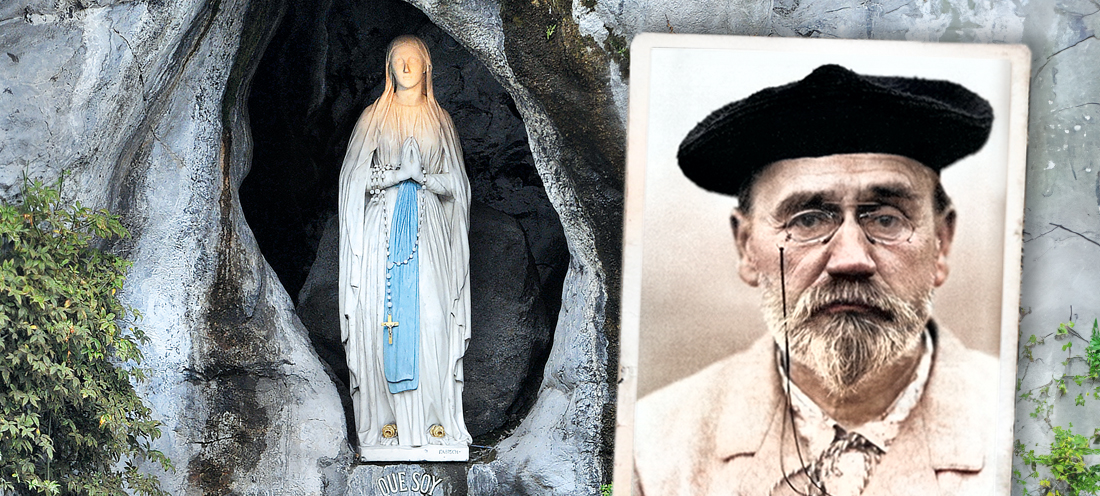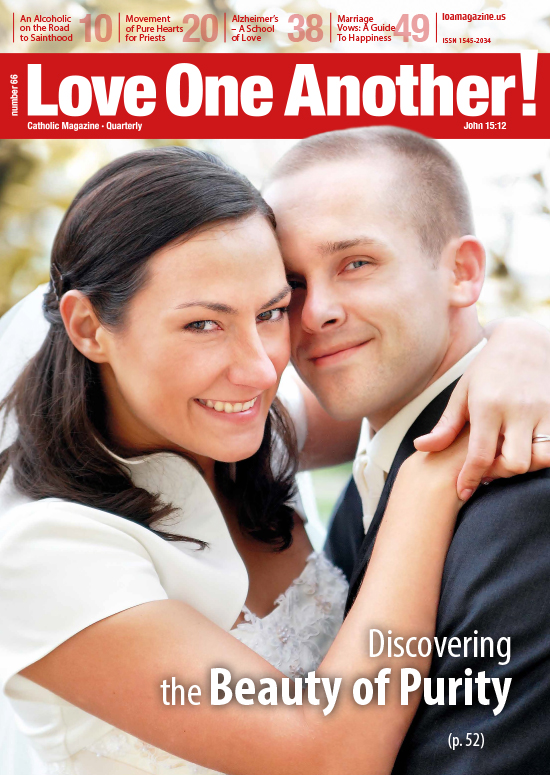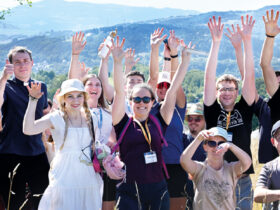The Conversion of Emile Zola – Writer and Masonic Lodge Master

The French writer Emile Zola, who was an atheist and Masonic Lodge master, as well as the main representative of positivism in literature, experienced a great spiritual shock when he was miraculously healed. Only then did he reconcile with God and sever all ties that connected him with Freemasonry.
The dominant anti-Catholic mass media in France and Europe kept persuading the general public that Lourdes (the town in France where there was a series of apparitions of Our Lady to St. Bernadette in 1858) was merely a site of religious fanaticism and deception inspired by the Catholic clergy. The enemies of the Catholic Church resorted to the vilest methods such as the falsification of facts and documents in order to ridicule and discredit the apparitions of Our Lady in Lourdes.
The great number of conversions and miraculous healings that have been taking place there on a continuous basis since the apparitions started is an extraordinary way in which God speaks to confused people.
It is not enough just to see a miracle to be converted; intellectual honesty and a sincere pursuit of the truth are also needed. People of ill will, who “by their wickedness suppress the truth”, (Romans 1:18) misinterpret miraculous signs. A good example of this is the famous writer Emile Zola, who was an atheist and Masonic Lodge master, and a major figure of positivism in French literature. On August 20, 1892, Zola arrived at Lourdes on a train, which was bringing the sick from Paris. Among them were two women in the final stages of tuberculosis: Marie Lebranche and Marie Lermarchand. They had come to ask for a healing miracle. Zola, on the other hand, had come to Lourdes with the intention of collecting materials for a book that was to expose “the frauds of the Catholic clergy.”
Standing in front of the apparition grotto amid the crowd of pilgrims, the writer witnessed an amazing event. Right before his eyes, both Maries, dying of tuberculosis, were miraculously healed in an instant. Although he saw the obvious fact of the complete healing of the two women who were close to death, Zola reacted in a shocking way. In his book, Lourdes, not only did he deny the miraculous healing of the women, but also went so far as to tell an absurd lie, saying that one of them died, despite the fact that by now she was living in Paris and was still enjoying excellent health. The writer, however, wanted to make his lie credible at all costs, so he personally visited the woman and, offering her a large sum of money, urged her to move to Belgium. In this way, he wanted to get rid of an inconvenient witness who could expose the falsehood contained in his publication. Although the lies in Zola’s book about Lourdes were repeatedly exposed, he never responded to the accusations.
In 1895, an article entitled The Fruits of Zola’s Calumny was published in Civilta Catolica, in which the author wrote about a certain paradox. Like Satan, who in spite of himself ultimately contributes to the praise of God in the world, so too Freemasonry through Zola contributed to the growth of devotion to Our Lady in Lourdes.
After the publication of Zola’s book about the apparitions of Lourdes, reporters and journalists began to arrive there in large numbers; many of them were unbelievers, cynics, and mockers. It was only when they were in Lourdes that they learned the facts and became convinced of the obvious miracles that often happened before their eyes. They were leaving as converted people with an awareness of the enormity of the mystery of God’s love.
Zola also experienced the miracle of conversion. This happened a few years after he wrote the slanderous book about Lourdes. In 1896 the writer suffered an open fracture of his leg; despite intensive treatment, the wound in his leg kept growing and he was in danger of having his limb amputated. On Christmas Eve, Zola had a dream that he was at a church singing a Christmas carol in front of a painting of the Madonna with Child. When he woke up he heard his wife singing the same Christmas carol. The writer immediately asked her to go to the church, light a candle there on his behalf, and pray in front of the image of the Blessed Virgin.
After this prayer, Zola’s leg was miraculously healed. It was a great spiritual shock for him. The writer immediately reconciled with God through the sacrament of penance, and began to pray every day and participate in the Eucharist. He also wrote a statement saying that he had been living in great error for the past 30 years. Zola broke all ties linking him with Freemasonry and warned against the great spiritual threat posed by its teaching and its battle against the Catholic Church. The writer also expressed his sincere regret and remorse for all the wrongs that he had committed during his activity in Freemasonry. He asked Pope Leo XIII for forgiveness for the great evil he had done to people, leading them to sin through his anti-Church publications and addresses.
A few years after Zola’s conversion, the Nobel laureate in medicine, Prof. Alexis Carrel, converted in Lourdes. He came to Lourdes as an atheist in 1903 with his patient Maria Ferrand, who was dying of peritoneal tuberculosis. During the blessing of the Blessed Sacrament in front of the grotto of Our Lady, Ferrand was miraculously healed before his eyes. This event was a turning point in Carrel’s life: he realized that God was beyond all scientific knowledge and understanding. He also understood that the only way leading to Him was paved with, the sacraments of penance and the Eucharist, and living in accordance with the Decalogue and the Gospel. The Nobel Prize winner wrote: “Wading through the darkness of reason, you reach Him with longing and love. Only then is it possible to experience God’s love, which is similar to the experiences of artists and lovers.”
From the moment of his conversion, Carrel’s most important life goal was to trust in God boundlessly, and to fulfil His will. The university community in Lyon could not come to terms with the fact that the scientist had become a deeply religious Catholic. His superiors threatened to fire him if he did not change his views. Carrel, however, remained unyielding. He left for New York, where at the Rockefeller Institute a career in science opened up for him, which was crowned with the awarding of the Nobel Prize in 1912.
Although Zola had seen a healing miracle in Lourdes, he refused to believe it. He did not convert until a few years later, when he experienced God’s omnipotence in his own life. On the other hand, Alexis Carrel read the miracle of the healing of his patient as God’s call to himself to accept the gift of His love in an act of humble faith. Miracles are clear signs of God’s mercy only for people of good will who sincerely seek the truth.
Saint Teresa Benedicta of the Cross (Edith Stein), who abandoned atheism after reading the biography of St. Teresa the Great, wrote: “God guides everyone on his own path; some reach their goal faster and easier, others later and with more difficulty. Everything we can do compared to what we receive is minimal. But we have to do that little bit on our own. First of all, pray persistently to learn the right way; when you find it, follow the inspiration of grace without hesitation. Those who do so and persevere cannot say that their efforts are in vain. You just should not set deadlines for God.”






